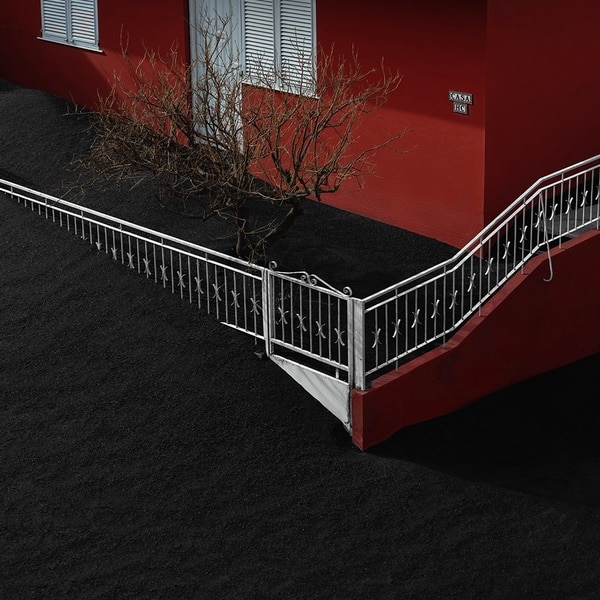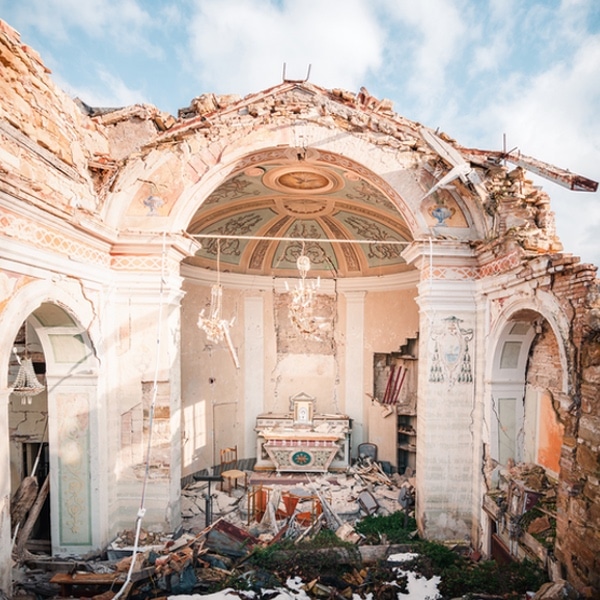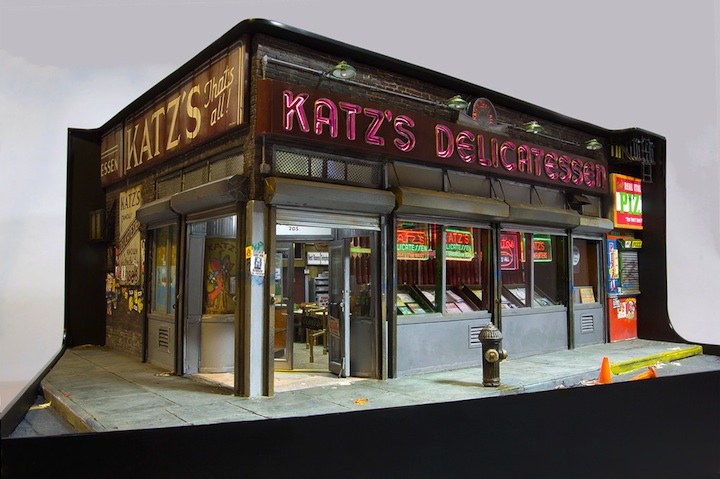
After Judy Gelles learned about the deeply troubling stories of inner city 4th graders, she became even more curious. What were 4th grade children experiencing in different schools not just in the US but around the world? Across cultures, which values remained the same and which were starkly different? She not only compared an inner city school with a private one in the United States, she traveled abroad to India and China.
These were her findings:
Inner city schools in the US have many problems due to the children's chaotic family structure.
Students in the private schools in the US are more fortunate.
Students in China value education, and are extremely close to their parents.
In India, kindness, moral values, family, and education are highly valued.
See more examples of these 4th grade children and their stories below.
INNER CITY SCHOOL, USA
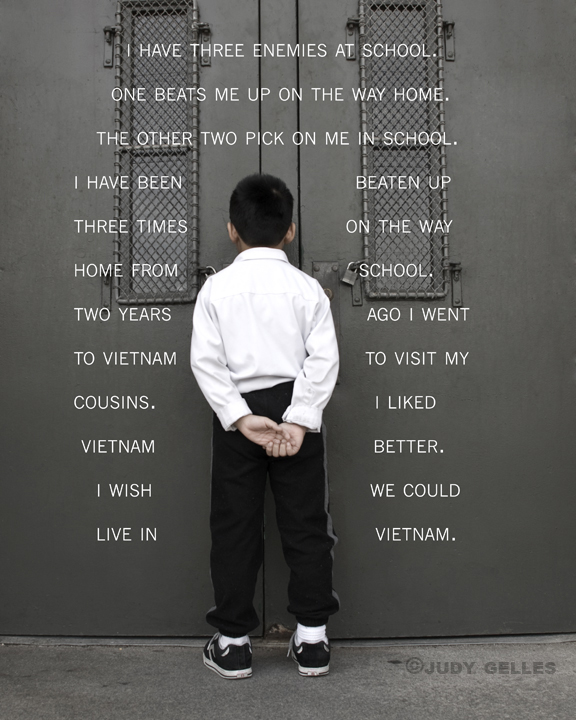
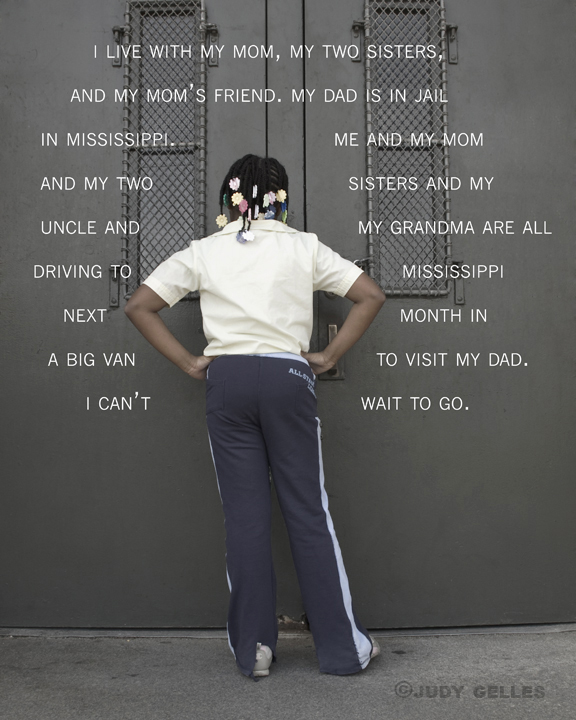
Inner City School USA African-American, Hispanic, and Asian immigrants make up the fabric of this school. The majority of the children are African American. Many students come from broken families and live in dangerous neighborhoods. This is a “lock down” school. The gray fortress main door of the school becomes a blank slate for the students' words. Their stories capture the gamut of societal issues: violence, immigration, the demise of the nuclear family, and the impact of the media and popular culture.
PRIVATE QUAKER SCHOOL, USA
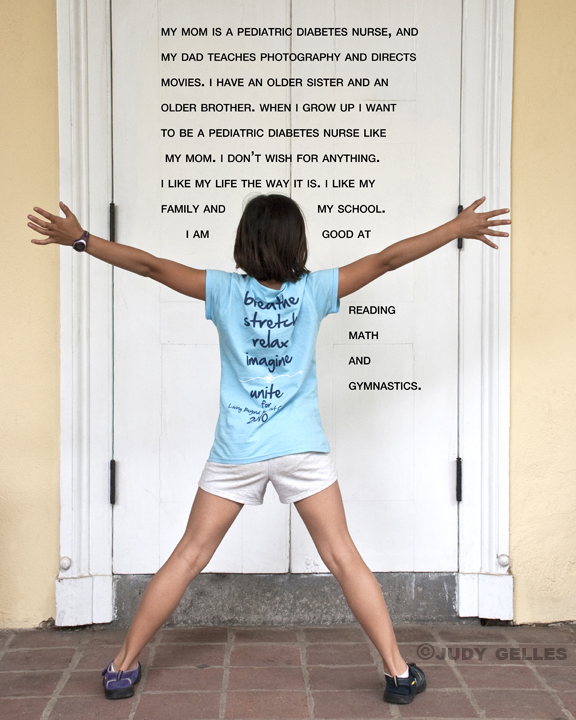
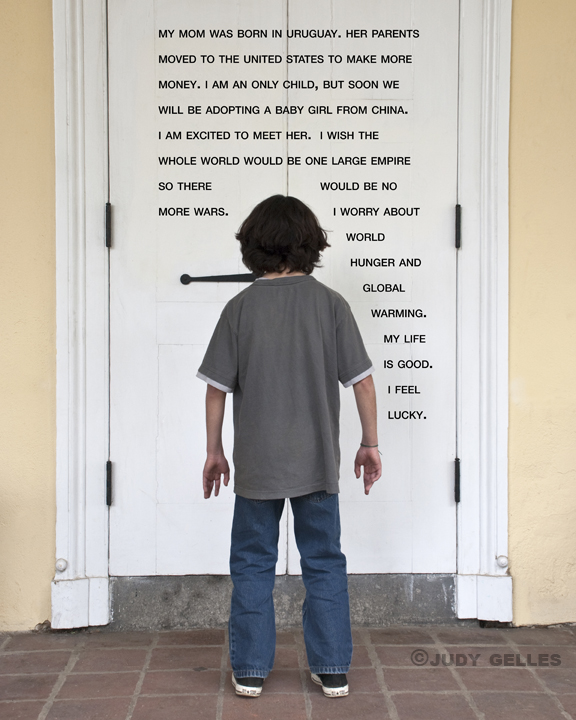
Private Quaker School USA Caucasian, African-American, Latino, and Asian students make up the fabric of the school. The majority of the children are Caucasian. The white clapboard main door of the school becomes a blank slate for their words. Most of these students love their school, come from two-parent families, and feel protected by their parents. They have high expectations of themselves, and worry about the negative effects of war, hunger, and global warming. A silent worship service for students and teachers takes place once a week from 8:30am to 9:00am. Anyone is allowed to share a message during this service.
CHINA
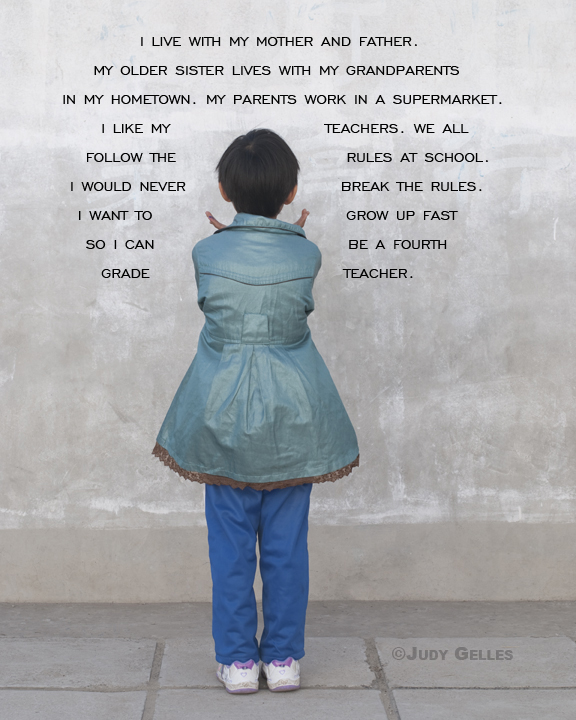
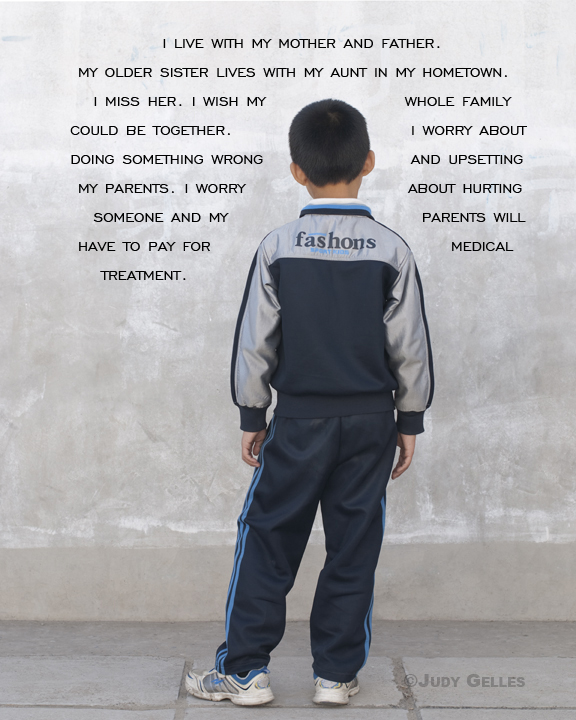
Migrant School Beijing, China Dong Fang Hong School, founded in 1999, is the only government approved school for migrant children in the Beijing. China's rural-to-urban migration has created twenty million migrant children who are a significant segment of the country's new urban poor. Thirty-nine percent of migrant children do not go to school, seventy-nine percent of migrant children share rooms with their parents, and sixty percent do not have access to refrigerated food. Because of China's household registration system, citizens are only authorized to use social services of the locale designated at birth, preventing migrants access to social, health, and educational services once they relocate. Migrant children must go back to where they are registered as residents (their hometown) for secondary education. A majority of migrant fourth-grade children are separated from their older brothers and sisters, aunts and uncles, and grandparents. The children are aware of their parents' sacrifices and want to do well in school for their parents.
INDIA

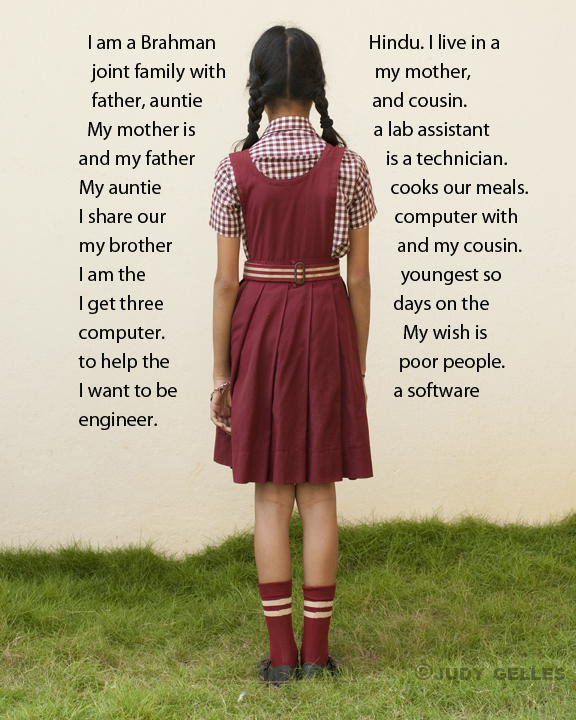
Dr. Nitte Shankara Adyanthaya Memorial English Medium School Nitte, Karkala, India This is an English-speaking school, although all students study three languages, English, Hindi, their national language, and Kannada, their state language. Hindu, Catholic, and Muslim children make up the fabric of the school. No religion is taught in the school. Children come from middle-class families, and many fathers work abroad in Arab countries. Many live in joint families. Yoga is taught twice a week, physical education is taught every day, dance and karate instruction take place twice a week along with music, drawing, and crafts. Students attend school six days a week. Moral values, such as discipline, respect, sacrifice, and kindness are taught throughout the curriculum. Parents are involved in the teaching of moral values at home. There are approximately fifty students in each classroom. Discipline is not a problem. Students are taught to respect their teacher. Most students worry about doing well on weekly tests, plan to attend the university, and want to be engineers or doctors when they grow up. Many miss their fathers who are working in other countries.













































































